Lentils
Lentils are a highly nutritious functional food, known for their rich protein content, fibre, and array of vitamins and minerals. These legumes come in a variety of colours, including green, red, brown, and black, each offering distinct benefits and culinary uses. Lentils are a great plant-based source of protein, making them an excellent choice for vegetarians, and those looking to reduce their meat consumption.
The functional benefits of lentils are largely due to their high fibre content, which supports digestive health, regulates blood sugar, and helps lower cholesterol levels.
Read More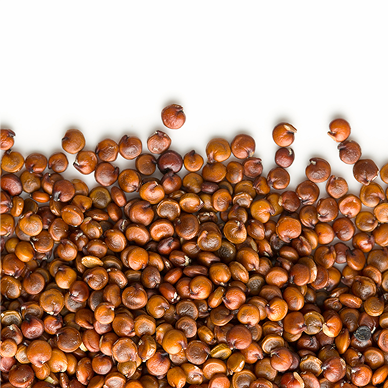
Lentils are also rich in plant-based protein, which supports muscle repair and growth. They contain essential minerals like iron, magnesium, and potassium, which promote heart health, regulate blood pressure, and support energy production. Lentils are also an excellent source of folate, which is important for cell growth and repair, and B-vitamins that help support overall metabolism.
Types of Lentils
- Green Lentils: Green lentils are known for their firm texture, making them ideal for salads, soups, and stews. They hold their shape well when cooked and are packed with antioxidants that support the immune system.
- Red Lentils: Red lentils cook quickly and have a softer texture when cooked, making them perfect for curries, soups, and purees. They are a good source of iron and magnesium, supporting energy levels and muscle function.
- Brown Lentils: Brown lentils have a mild flavour and earthy taste. They are highly versatile and are great for a variety of dishes, from casseroles to veggie burgers. Brown lentils are rich in soluble fibre, helping regulate blood sugar and cholesterol.
- Black Lentils (Beluga): Black lentils are small, round, and resemble caviar. They have a slightly earthy taste and are packed with antioxidants that support heart health and reduce inflammation.
Incorporating lentils into your diet is simple and versatile. Enjoy them in soups, salads, curries, or stews. You can also blend them into dips like hummus or use them as a meat substitute in veggie burgers or tacos.
Recommended Intake
- ½ to 1 cup (90–180g) of cooked lentils per day, depending on individual dietary needs.
Tips
- Rinse lentils before cooking to remove any dirt or debris.
- Soak lentils for a few hours to reduce cooking time and improve digestibility.
- Add lentils to soups, stews, or casseroles for a hearty and nutrient-dense meal.
- Pair with grains like rice or quinoa for a complete source of plant-based protein.
- Try making lentil-based veggie burgers or fritters for a healthy, protein-packed alternative to meat.
Avoid
- Overcooking – Lentils, especially red lentils, can turn mushy if overcooked. Be mindful of cooking times to retain their texture.
- Skipping the soaking process – Soaking lentils before cooking can help reduce cooking time and improve digestion.
- Relying solely on lentils for protein – While lentils are a great source of protein, it’s important to include a variety of protein-rich foods in your diet for balanced nutrition.
Benefits
- High in plant-based protein, supporting muscle repair and growth.
- Packed with soluble fibre, which helps lower cholesterol and regulate blood sugar.
- Rich in essential minerals like iron, magnesium, and potassium, supporting heart health and energy production.
- A great source of folate and B-vitamins, which aid in cell growth, repair, and overall metabolism.
- Versatile and easy to incorporate into a variety of dishes, from soups to salads to plant-based meat alternatives.
- Antioxidants found in lentils help support immune health and reduce inflammation.
Beans
Beans are a versatile and nutrient-dense functional food, known for their rich protein content, fibre, and array of vitamins and minerals. There are various types of beans, including kidney beans, black beans, pinto beans, navy beans, and more, each offering unique health benefits and culinary uses. Beans are an excellent plant-based source of protein, making them a fantastic choice for vegetarians and those aiming to reduce meat consumption.
Read More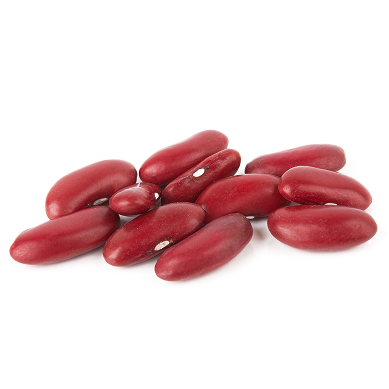
The functional benefits of beans are largely attributed to their high fibre content, which aids digestion, helps regulate blood sugar, and lowers cholesterol. Beans are also a great source of plant-based protein, which supports muscle repair and growth. They contain key minerals like magnesium, potassium, and iron, which are essential for heart health, energy production, and overall well-being. Beans are rich in folate, which promotes cell growth and repair, and B-vitamins that support metabolism.
Kidney Beans
Kidney beans are large and kidney-shaped, with a mild, earthy flavour. They are rich in iron, which supports energy production, and are excellent for heart health. Their high fibre content helps regulate blood sugar levels.
Black Beans
Black beans are small, oval-shaped beans with a creamy texture. They are rich in antioxidants, particularly anthocyanins, which support heart health and reduce inflammation. Black beans are also a great source of fibre and protein.
Pinto Beans
Pinto beans are medium-sized and mottled with a beige and pink hue. They are a good source of potassium, which helps regulate blood pressure, and are high in fibre, which aids digestion and supports healthy cholesterol levels.
Navy Beans
Navy beans are small, oval-shaped beans that are creamy in texture. They are packed with folate and B-vitamins, which support metabolic function and energy production. Navy beans are also rich in fibre, which aids in digestion and heart health.
Chickpeas (Garbanzo Beans)
Chickpeas are round and beige, with a nutty flavour. They are high in protein and fibre, supporting muscle growth and digestive health. Chickpeas are also a good source of manganese, which aids in bone health.
Incorporating beans into your diet is easy and delicious. Enjoy them in soups, stews, salads, or as a filling in tacos and wraps. You can also blend them into dips like hummus, make bean-based veggie burgers, or use them as a meat substitute in curries and casseroles.
Recommended Intake
- ½ to 1 cup (90–180g) of cooked beans per day, depending on individual dietary needs.
Tips
- Soak beans overnight before cooking to reduce cooking time and improve digestibility.
- Rinse beans thoroughly before cooking to remove any dirt or debris.
- Add beans to soups, stews, salads, or pasta dishes for a hearty, protein-packed meal.
- Use beans as a base for vegetarian burgers, dips, or casseroles.
- Pair beans with whole grains like rice, quinoa, or barley for a complete protein source.
Avoid
- Overconsuming beans without proper soaking – Beans can cause digestive discomfort if not soaked properly.
- Eating too many beans in one sitting – While nutritious, beans are calorie-dense, so moderation is key to avoid digestive discomfort.
- Relying only on beans for protein – Beans are a great protein source, but variety is important in a balanced diet.
Benefits
- High in plant-based protein, supporting muscle growth and repair.
- Packed with soluble fibre, which helps regulate blood sugar, lower cholesterol, and support digestive health.
- Rich in essential minerals like iron, magnesium, and potassium, which promote heart health and energy production.
- An excellent source of folate and B-vitamins, which aid in metabolism and cell function.
- Antioxidants in beans help reduce inflammation and support immune health.
- Versatile and easy to incorporate into a variety of dishes, from soups and stews to salads and veggie burgers.
Wholewheat Couscous
Wholewheat couscous is a nutritious and versatile grain product made from whole wheat flour, offering a healthier alternative to traditional couscous. Known for its light, fluffy texture and ability to absorb flavours, it serves as an excellent base for a variety of dishes. Wholewheat couscous retains more of the bran and germ compared to refined couscous, making it a more fibre-rich option with additional vitamins and minerals.
Read More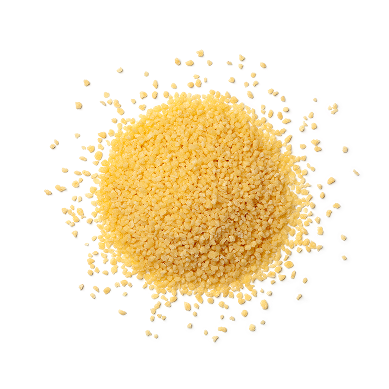
The functional benefits of wholewheat couscous primarily stem from its high fibre content, which promotes healthy digestion, regulates blood sugar levels, and helps maintain a feeling of fullness. Wholewheat couscous is also a good source of B-vitamins like thiamine, niacin, and folate, which are essential for energy production, metabolism, and cellular function. It contains important minerals such as magnesium and iron, which support heart health, muscle function, and oxygen transport in the body.
Wholewheat couscous has a low glycaemic index (GI) making it a great choice for individuals looking to control blood sugar levels. The presence of complex carbohydrates also provides a steady and sustained energy release, making it a great addition to meals for improved satiety and performance.
Incorporating wholewheat couscous into your meals is quick and easy. It can be served as a side dish, mixed into salads, or used as a base for stews, curries, or roasted vegetables. Wholewheat couscous can also be paired with legumes, nuts, seeds, and lean proteins to create a balanced, nutrient-dense meal.
Recommended Intake
- ½ to 1 cup (90–180g) of cooked wholewheat couscous per meal, depending on individual dietary needs.
Tips
- Cook wholewheat couscous according to package instructions, typically by steaming or soaking in hot water for 5–10 minutes.
- Add herbs, spices, and a drizzle of olive oil or lemon juice for extra flavour.
- Pair with lean proteins like chicken, fish, or plant-based options like chickpeas or lentils for a complete meal.
- Mix with vegetables like roasted carrots, peppers, or spinach for a nutritious salad.
- Use it as a base for grain bowls, adding toppings like avocado, nuts, and seeds for extra texture and nutrients.
Avoid
- Overcooking – Wholewheat couscous cooks quickly, so avoid overcooking to maintain its light, fluffy texture.
- Consuming too much without balancing with other food groups – While nutritious, wholewheat couscous is calorie-dense, so it’s best enjoyed as part of a balanced meal.
Benefits
- High in fibre, promoting healthy digestion, regulating blood sugar, and supporting heart health.
- A good source of B-vitamins, which aid in energy production, metabolism, and cellular function.
- Contains essential minerals like magnesium and iron, supporting muscle function, oxygen transport, and overall well-being.
- Low glycaemic index, providing a steady source of energy without causing spikes in blood sugar.
- Quick and easy to prepare, making it a versatile addition to a wide range of dishes.
- Pairs well with a variety of vegetables, proteins, and legumes for a balanced, nutrient-dense meal.
Quinoa
Quinoa is a highly nutritious pseudocereal that has gained popularity for its impressive health benefits and versatility. Known for its light, fluffy texture when cooked, quinoa is a complete source of plant-based protein, containing all nine essential amino acids. It is also rich in vitamins, minerals, and fibre, making it a valuable addition to a balanced diet.
The functional benefits of quinoa are primarily due to its high protein content, which supports muscle repair and growth.
Read More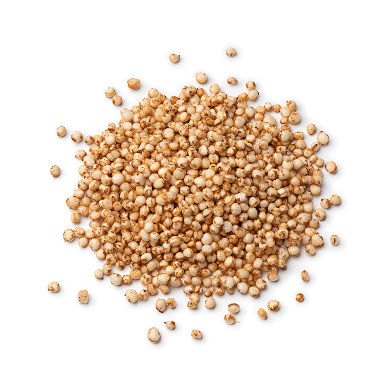
It is also an excellent source of fibre
which promotes digestive health, helps regulate blood sugar, and aids in maintaining a healthy weight. Quinoa contains important minerals like magnesium, iron, and potassium, which support heart health, muscle function, and overall metabolic processes. Additionally, quinoa is naturally gluten-free, making it an ideal option for those with gluten sensitivities or celiac disease.
Quinoa’s low glycaemic index (GI) makes it a great choice for individuals looking to stabilise blood sugar levels and maintain consistent energy throughout the day. The presence of antioxidants, such as flavonoids, helps reduce inflammation in the body, further supporting overall health.
Incorporating quinoa into your meals is easy and delicious. Use it as a base for salads, bowls, or grain-based dishes, or enjoy it as a substitute for rice or couscous. It can also be added to soups, stews, or used in baking for added texture and nutritional benefits.
Recommended Intake
- ½ to 1 cup (90–185g) of cooked quinoa per meal, depending on individual dietary needs.
Tips
- Rinse quinoa thoroughly before cooking to remove its natural coating, called saponin, which can have a bitter taste.
- Cook quinoa by simmering it in water or broth for about 15 minutes, or until all the liquid is absorbed.
- Pair quinoa with vegetables, legumes, nuts, and seeds for a balanced meal.
- Use quinoa in salads, grain bowls, or as a side dish for a nutritious and filling addition to your meals.
- Try using quinoa flour in baking to increase the protein content of your recipes.
Avoid
- Overcooking – Quinoa cooks quickly, so avoid overcooking to maintain its fluffy texture.
- Consuming too much without balancing with other food groups – While highly nutritious, quinoa should be enjoyed as part of a balanced diet to avoid excess calorie intake.
Benefits
- A complete source of plant-based protein, containing all nine essential amino acids for muscle repair and growth.
- High in fibre, promoting healthy digestion, blood sugar regulation, and weight management.
- Rich in important minerals like magnesium, iron, and potassium, which support heart health and overall metabolic function.
- Naturally gluten-free, making it an excellent option for individuals with gluten sensitivities or celiac disease.
- Low glycaemic index, providing a steady release of energy without causing blood sugar spikes.
- Contains antioxidants like flavonoids, which help reduce inflammation and protect cells from oxidative stress.
Kamut
Kamut flour, derived from an ancient grain known as Khorasan wheat, is known for its rich, nutty flavour and strong nutritional profile. This heirloom wheat variety is often organically grown and is less processed than modern wheat, making it a more wholesome choice for health-conscious individuals.
Kamut has a higher protein content compared to standard wheat and is a good source of essential nutrients such as selenium, zinc, and magnesium.
Read More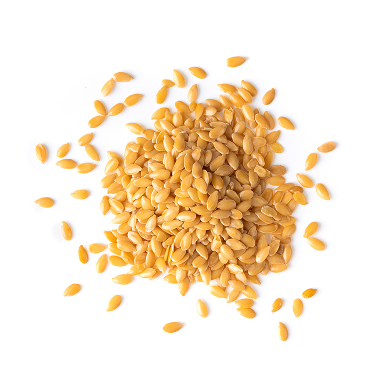
It's also easier to digest for many people who have sensitivities to modern wheat, though it still contains gluten and is not suitable for those with coeliac disease.Functional BenefitsKamut flour contains antioxidants, including selenium, which supports immune health and helps protect cells from oxidative stress. Its magnesium content supports nerve function, muscle health, and energy metabolism.Protein and NutrientsKamut provides up to 40% more protein than regular wheat, supporting muscle development and repair. It’s rich in B vitamins such as niacin and thiamin, which assist in energy production and brain function. Its zinc content supports wound healing and immune response.Uses in CookingKamut flour has a buttery, slightly sweet flavour, making it suitable for breads, muffins, pancakes, and pasta. Its denser texture works best when combined with other flours for baking.
Recommended Intake
- Use in place of conventional wheat flour in recipes where a rich, nutty taste is desired, typically in a 1:1 ratio with adjustments for liquid as needed.
Tips
- Combine with lighter flours (like spelt or plain flour) for fluffier baked goods.
- Ideal for slow fermentation methods like sourdough to improve digestibility.
- Store in a cool, dry place to preserve freshness.
Avoid
- Overworking dough. Kamut has a strong gluten structure that can become tough if over-kneaded.
- Using it as a direct substitute in all recipes without adjustments. It may require more liquid or longer resting times.
Benefits
- Higher in protein and essential minerals than modern wheat.
- Contains selenium and zinc, supporting immunity and antioxidant defence.
- A more digestible grain option for those with wheat sensitivities (not coeliac-safe).
- Distinct flavour that enhances baked goods and pastas.
- Supports energy production, muscle health, and metabolism.
Spelt Flour
Spelt is an ancient grain known for its mild, slightly sweet and nutty taste and its nutritional advantages over refined flours. It is a form of wheat, but one that has been minimally hybridised, preserving many of its original properties.
Spelt flour is high in dietary fibre, protein, and minerals including manganese, phosphorus, and iron. Like Kamut, spelt contains gluten, but some people find it easier to digest than modern wheat.
Read More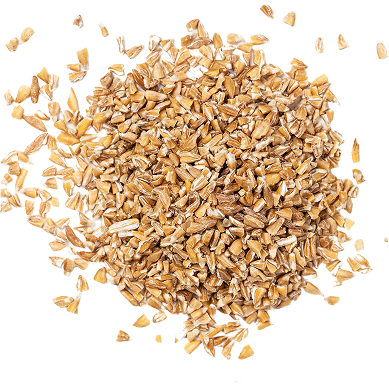
Functional BenefitsSpelt supports digestive health due to its fibre content. It also contains complex carbohydrates that provide sustained energy without spiking blood sugar. Its iron content supports red blood cell production and overall health.Protein and NutrientsSpelt flour contains all nine essential amino acids in small amounts, making it a more complete plant-based protein source. It’s also rich in magnesium and B vitamins, which help maintain energy levels and support nerve function.Uses in CookingSpelt flour can be used in baking bread, pastries, and pancakes. Its light texture and mild flavour make it suitable for both sweet and savoury dishes. It works well in rustic loaves, muffins, and biscuits.
Recommended Intake
- Use spelt flour as a substitute for up to 50–100% of regular flour in recipes, depending on the texture and flavour desired.
Tips
- Add a little less liquid than usual, as spelt dough is more water-soluble than regular wheat.
- Do not over-knead spelt dough, its gluten structure is more delicate.
- Ideal for those exploring less processed, traditional grain flours.
Avoid
- Using it as the sole flour in very light or delicate bakes (like sponge cakes), unless a heartier crumb is preferred.
- Assuming it is gluten-free, spelt is not suitable for those with coeliac disease.
Benefits
- High in fibre, promoting digestive health and regularity.
- Contains iron and magnesium to support energy, oxygen transport, and cardiovascular function.
- Easier to digest than modern wheat for many people.
- Naturally rich in B vitamins and antioxidants.
- A nutritious alternative flour that works across many recipes.









